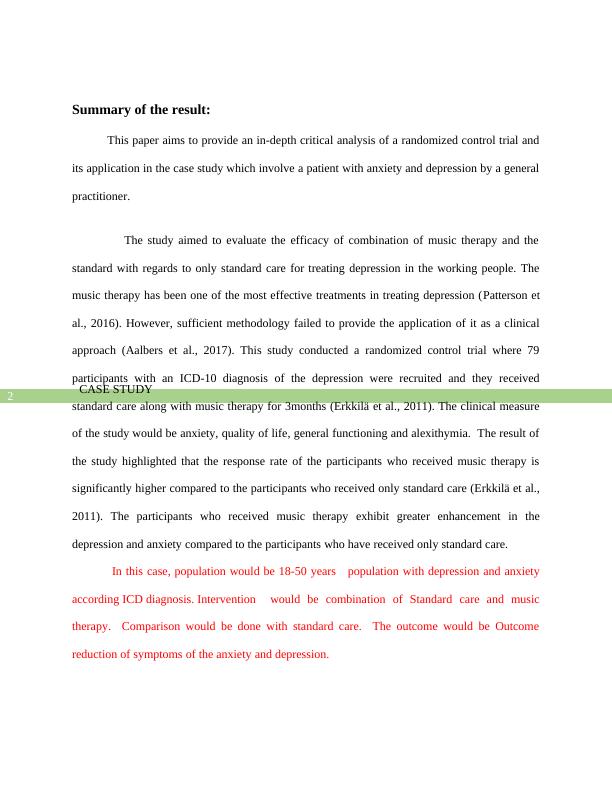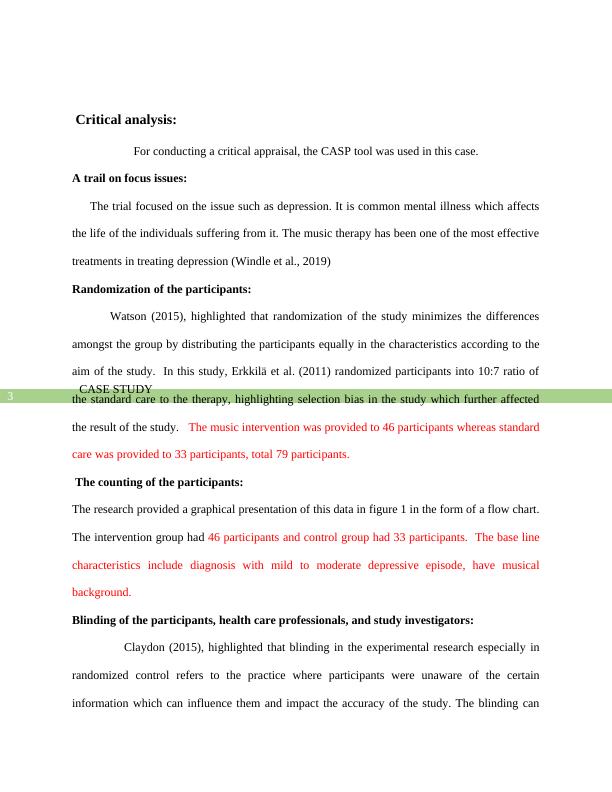Critical Analysis of Music Therapy for Depression: A Case Study
Efficacy of music therapy added to standard care compared with standard care only in the treatment of depression among working-age people.
11 Pages2470 Words1 Views
Added on 2022-12-22
About This Document
This paper provides a critical analysis of a case study on the efficacy of music therapy for depression. It discusses the study design, sample size, blinding, and outcome measures. The results show that music therapy is effective in reducing symptoms of depression and anxiety. The study can be applied to patients with depression and anxiety in various settings.
Critical Analysis of Music Therapy for Depression: A Case Study
Efficacy of music therapy added to standard care compared with standard care only in the treatment of depression among working-age people.
Added on 2022-12-22
ShareRelated Documents
End of preview
Want to access all the pages? Upload your documents or become a member.
Critique of the Article
|8
|2239
|100
Evidence For Nursing Assignment
|5
|923
|17
Music Therapy Postoperatively for Pain Control
|10
|2406
|124
CASP Checklists for Qualitative and Randomized Controlled Trials
|17
|4589
|335
Cognitive Behavioral Therapy for Depression in Adolescents
|10
|2158
|91
Literature Review on HIV infected Victims
|7
|2829
|228




